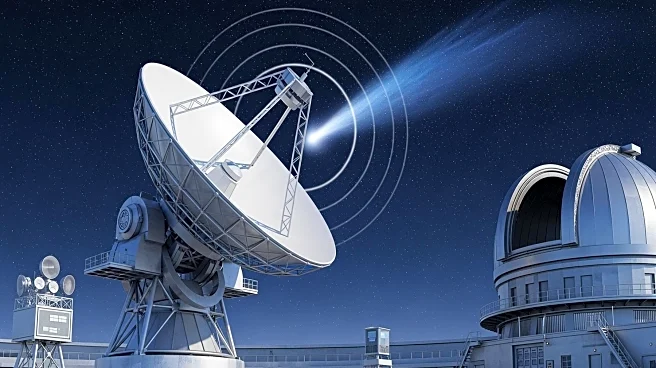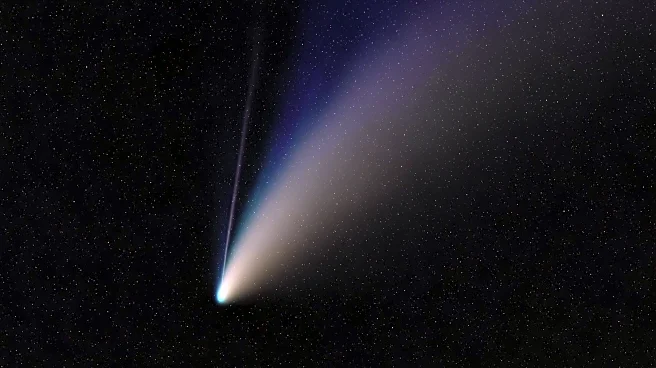What's Happening?
The Shanghai Astronomical Observatory, part of the Chinese Academy of Sciences, has detected intriguing radio signals emanating from Comet 12P/Pons-Brooks. Using the Tianma Radio Telescope, researchers
observed the comet during its 2024 approach to the Sun, noting that it released over five tons of water vapor at a distance of one astronomical unit. This is significantly more than other comets of similar type. The study also marked the first detection of ammonia molecules in a Halley-type comet, suggesting a connection between the comet's subsurface volatile reservoir and its outburst mechanism. These findings provide insights into the composition and activity of such comets, potentially offering clues about the early solar system.
Why It's Important?
The discovery of water with an isotopic signature similar to Earth's in Comet 12P/Pons-Brooks supports the hypothesis that comets may have played a role in making Earth habitable by delivering water. This finding is crucial for understanding the origins of water on Earth and the potential for life-supporting conditions elsewhere in the universe. The detection of ammonia and the comet's high activity levels also contribute to the broader understanding of cometary compositions and behaviors, which are essential for piecing together the history of our solar system and the conditions that led to the development of life.












